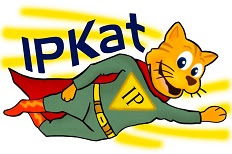
Brazil in the Highway again!
The Patent Prosecution Highway (PPH) Pilot Project signed by the Brazilian National Institute of Industrial Property (INPI) and the US Patent and Trademark Office (USPTO) Phase I, was in force until May 10, 2018. The Pilot Project commenced on January 11, 2016, and was scheduled to end on January 10, 2018, but was later on extended until May 10, 2018.
 Now the Pilot Project between these two offices have entered into Phase II, commencing on May 10 of this year and until April 30, 2020. By reading the Magazine of Industrial Property (RPI) nº 2470, published on 08 May, one can notice that another industry that will benefit from this project is the ‘information technology’ one – before, the Pilot Project Phase I was applicable to the ‘oil, gas and petrochemical industry’ only. Moreover, to be eligible, the invention needs to be classified with one of the symbols of the International Patent Classification - IPC.
Now the Pilot Project between these two offices have entered into Phase II, commencing on May 10 of this year and until April 30, 2020. By reading the Magazine of Industrial Property (RPI) nº 2470, published on 08 May, one can notice that another industry that will benefit from this project is the ‘information technology’ one – before, the Pilot Project Phase I was applicable to the ‘oil, gas and petrochemical industry’ only. Moreover, to be eligible, the invention needs to be classified with one of the symbols of the International Patent Classification - IPC.
According to INPI, 200 applications will be accepted among which up to 50 patent applications will obtain advantage from the preliminary opinion result obtained by the Patent Cooperation Treaty (PCT). Phase I was limited to the first 150 eligible applicants. INPI summarises the PPH stating that ‘Brazilians can use the result of the examination of the patent application in the INPI to accelerate the analysis in the United States and vice versa. Upon entering the program, INPI has issued a final decision in 180 days, on average’. A PPH does not automatically grants a patent, since each national IPO will carry out its examination pursuant to their own legislation and procedures in force.
More information can be found in the Revista da Propriedade Industrial (RPI) nº 2470 (in Portuguese)
 Now the Pilot Project between these two offices have entered into Phase II, commencing on May 10 of this year and until April 30, 2020. By reading the Magazine of Industrial Property (RPI) nº 2470, published on 08 May, one can notice that another industry that will benefit from this project is the ‘information technology’ one – before, the Pilot Project Phase I was applicable to the ‘oil, gas and petrochemical industry’ only. Moreover, to be eligible, the invention needs to be classified with one of the symbols of the International Patent Classification - IPC.
Now the Pilot Project between these two offices have entered into Phase II, commencing on May 10 of this year and until April 30, 2020. By reading the Magazine of Industrial Property (RPI) nº 2470, published on 08 May, one can notice that another industry that will benefit from this project is the ‘information technology’ one – before, the Pilot Project Phase I was applicable to the ‘oil, gas and petrochemical industry’ only. Moreover, to be eligible, the invention needs to be classified with one of the symbols of the International Patent Classification - IPC.According to INPI, 200 applications will be accepted among which up to 50 patent applications will obtain advantage from the preliminary opinion result obtained by the Patent Cooperation Treaty (PCT). Phase I was limited to the first 150 eligible applicants. INPI summarises the PPH stating that ‘Brazilians can use the result of the examination of the patent application in the INPI to accelerate the analysis in the United States and vice versa. Upon entering the program, INPI has issued a final decision in 180 days, on average’. A PPH does not automatically grants a patent, since each national IPO will carry out its examination pursuant to their own legislation and procedures in force.
More information can be found in the Revista da Propriedade Industrial (RPI) nº 2470 (in Portuguese)














